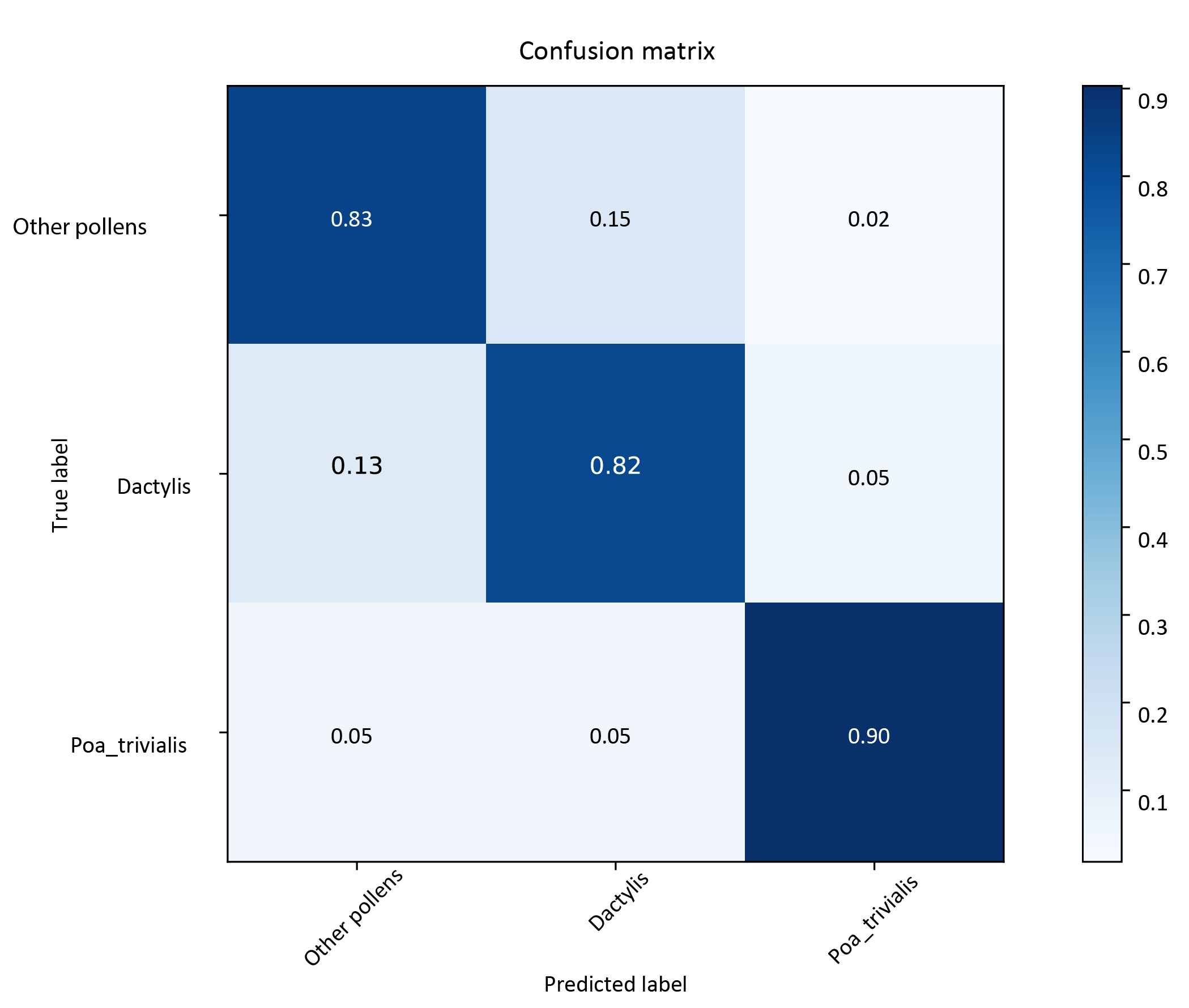Real-time counting and identification of grass pollen species with Rapid-E
Over the last decades pollen has become more and more aggressive, causing stronger allergic reactions. Plants, when exposed to higher temperatures and CO2 levels tend to grow more and produce more pollen, which would partially explain the increase in allergic reactions [1] . Caused by many different species from the families of trees, grasses and weeds, pollen allergies are felt by up to 30% of the global population from January through September, every year.
Spring is not the best time for allergic people, with the birch season coming to an end, it is now the start of the grass season to which a great deal of the population is allergic to. These allergens lead to very uncomfortable symptoms, going from sneezing, to a runny or itchy nose, through nasal congestion as well as watery eyes [2] . Grasses can be found worldwide and thrive in almost any climate, representing alone the most important source of allergen, touching 1.2M people in Switzerland, respectively ~20% of the population. Grasses, as opposed to many other plants, pollinate via the air and wind and not through animal pollinators. Their pollination therefore not being very targeted, grass species compensate this through a much higher production of pollen, creating enormous clouds. One grass stem being able to produce on average 7 million grains of pollen on its own [3] .
Two common grass allergens in Europe are Dactylis Glomerata and Poa Trivialis which are road side and field plants, are illustrated hereunder and show the pollen and the plant for both. It is clearly noticeable that the plants can easily be differentiated, however the pollen grains on the other hand are close to impossible.

Dactylis Glomerata (left) and Poa Trivialis (right).
Photo credit from left to right: Allergen Science & Consulting, Pallano Altervista, Intech Open, Malta Wild Plants.
Identification of different grass pollen species by manual methods such as particle sampling and analysis under the microscope is challenging. Therefore, there is no specific species alert available form Met Offices to this day.
Plair’s Rapid-E instrument however, is able to clearly differentiate specific grass species, such as Dactylis Glomerata and Poa Trivialis, thanks to its proprietary, patented technology based on scattered light pattern analysis and advanced fluorescence spectroscopy. The Plair instrument is also capable of differentiating these two grass species against all other pollen species in the air simultaneously and in real time. The confusion matrix below, shows the identification capability of Rapid-E between the specific Dactylis Glomerata and Poa Trivialis grass pollen species against each other and all other pollen species.

Confusion matrix: Dactylis Glometata vs. Poa Trivialis
This is an example of two common grass species in Europe, however other grass pollen species can be distinguished and further tracked instantly by Rapid-E, with the same identification success.
Read more about Rapid-E here
